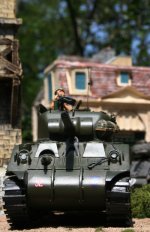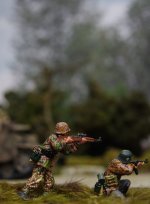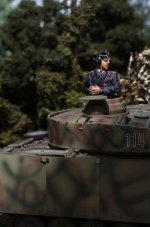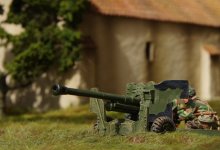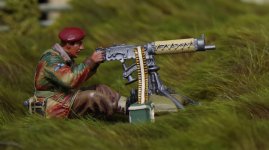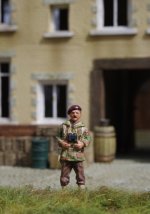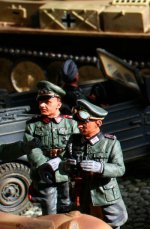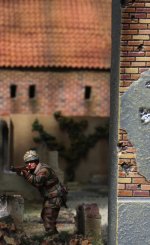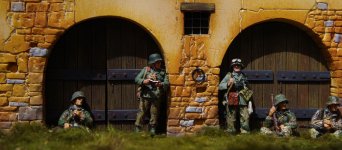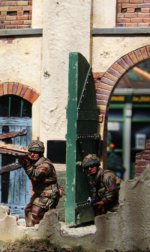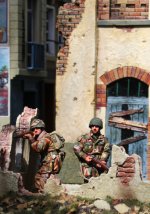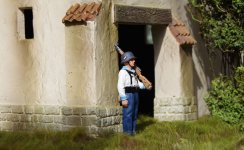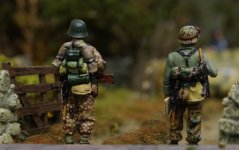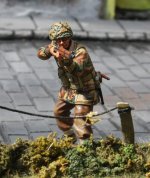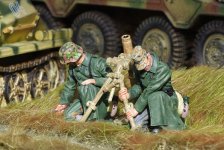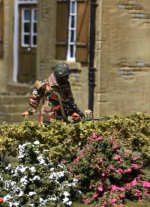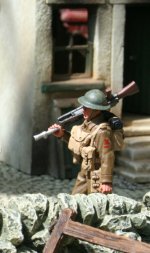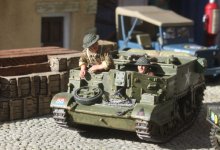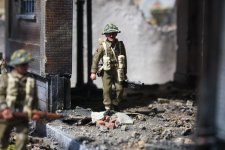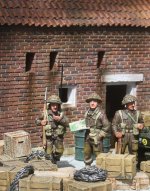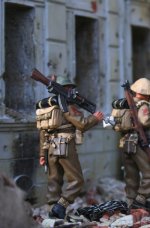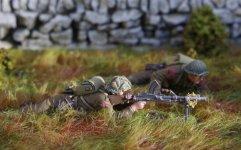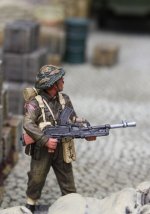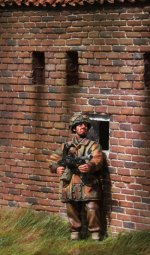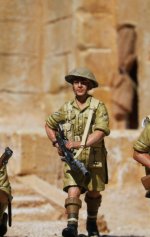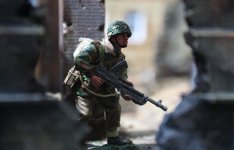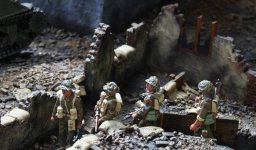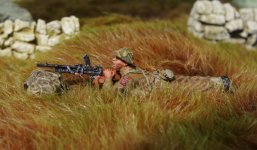Before I do the next bit, I want to give some background.
Bren Gun
The Bren gun (Brno-Enfield) was a series of
light machine guns (LMG) made by the United Kingdom in the 1930s and used in various roles until 1992.
While best known for its role as the British and
Commonwealth forces' primary infantry LMG in
World War II, it was also used in the
Korean War and saw service throughout the latter half of the 20th century, including the 1982
Falklands War.
Although fitted with a
bipod, it could also be mounted on a tripod or be vehicle-mounted.
The Bren gun was a licensed version of the Czechoslovak
ZGB 33 light machine gun which, in turn, was a modified version of the
ZB vz. 26, which
British Army officials had tested during a firearms service competition in the 1930s.
The later Bren gun featured a distinctive top-mounted curved box magazine, conical flash hider, and quick change barrel.
The designer was
Václav Holek, a gun inventor and design engineer.
In the 1950s, many Bren guns were re-barrelled to accept the
7.62×51mm NATO cartridge and modified to feed from the magazine for the
L1 (Commonwealth version of the
FN FAL) rifle as the L4 light machine gun.
It was replaced in the British Army as the section LMG by the
L7 general-purpose machine gun (GPMG), a
belt-fed weapon.
This was supplemented in the 1980s by the
L86 Light Support Weapon firing the
5.56×45mm NATO round, leaving the Bren gun in use only as a pintle mount on some vehicles. The Bren gun was manufactured by
Indian Ordnance Factories as the "Gun Machine 7.62mm 1B" before it was discontinued in 2012.
The name
Bren was derived from
Brno, the city in
Czechoslovakia, where the Zb vz. 26 was designed (in the
Zbrojovka Brno Factory) and
Enfield, site of the British
Royal Small Arms Factory.
At the close of
World War I in 1918, the British Army was equipped with two main automatic weapons; the
Vickers medium machine gun (MMG) and the
Lewis light machine gun. The Vickers was heavy and required a supply of water to keep it in operation, which tended to relegate it to static defence and indirect fire support. The Lewis, although lighter, was still heavy and was prone to frequent stoppages: its barrel could not be changed in the field, which meant that sustained firing resulted in overheating until it stopped altogether.
In 1922, to find a replacement for the Lewis, the Small Arms Committee of the British Army ran competitive trials between the
Madsen machine gun, the
M1918 Browning Automatic Rifle (BAR), the
Hotchkiss M1909 machine gun, the
Beardmore–Farquhar rifle, and the Lewis itself.
Although the BAR was recommended, the sheer number of Lewis guns available and the difficult financial conditions meant that nothing was done.
Various new models of light machine gun were tested as they became available, and in 1930, a further set of extensive trials commenced, overseen by
Frederick Hubert Vinden. This time the weapons tested included the
SIG Neuhausen KE7, the
Vickers–Berthier and the Czechoslovak ZB vz. 27.
The last did not meet high requirements for durability and reliability, mainly because
gunpowder residue from British
cordite was obstructing the gas tube (ZB vz. 27 was also sent in 7.92 Mauser instead of .303 British, but ZB already held a patent for a staggered magazine for rimmed rounds).
The Vickers–Berthier was later adopted by the
Indian Army because it could be manufactured at once, rather than wait for the British Lewis production run to finish; it too saw extensive service in World War II.
A modified variant with a shortened gas tube was tested again in June 1932, and then the newly developed
ZB-30 in .303 was tested again in November. Receiving more feedback and incorporating it into the design by January 1933, two other modifications were tested by British representatives in
Brno in July. One of the variants was selected, designated ZGB 33 (for Zbrojovka, United Kingdom, 33), and 10 samples were sent to England in autumn 1933. After additional trials in early 1934, more samples were ordered during the summer of 1934, and on May 24, 1935, the licence for British manufacture was finally acquired, and the design was adopted under the Bren name.
The major changes were in the magazine and barrel and the lower pistol grip assembly which went from a swivelling grip frame pivoted on the front of the trigger guard to a sliding grip frame which included the forward tripod mount and sliding ejection port cover.
The magazine was curved in order to feed the rimmed
.303 inch SAA ("Small Arms Ammunition") cartridge, a change from the various
rimless Mauser-design
cartridges such as the
7.9-mm Mauser round previously used by Czech designs.
These modifications were categorised in various numbered designations, ZB vz. 27, ZB vz. 30, ZB vz. 32, and finally the ZGB 33, which was licensed for manufacture under the Bren name.

 .....
..... 
